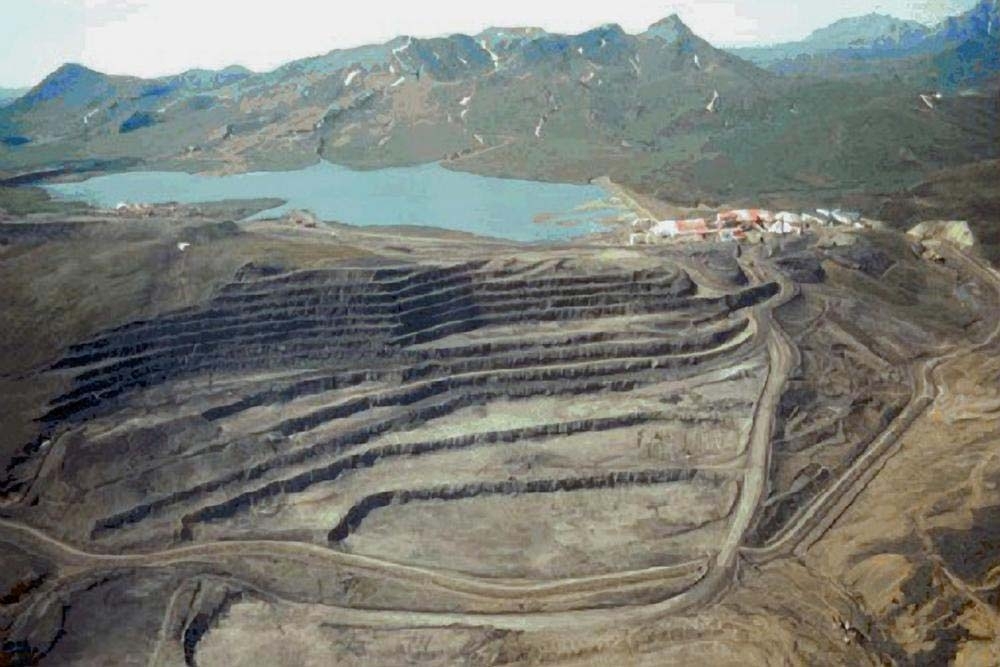How well do extractive companies operating in the Arctic uphold indigenous rights? A new study investigates

A new survey conducted suggests that the oil industry is better equipped than the mining companies to maintain the rights of indigenous peoples in the Arctic.
The study, conducted by Indra Øverland, a researcher at the Norwegian Institute of International Affairs, evaluated 92 companies involved in land-based extraction of natural resources in the Circumpolar North and ranked them according to a set of 20 criteria. It found that less than 40 percent of those companies are prepared to maintain and respect indigenous people’s rights in the areas in which they operate.
Øverland explains that the scientists have not looked at how the companies operate in practice, but rather how they have organized themselves and which standards they have committed to following. To put it in other words, it’s all about which mechanisms each company has in place to handle indigenous peoples’ rights and whether or not they have committed to safeguarding such rights.
“It would probably be better to consider the behavior of each company, but it is hard to do that in an objective way,” Øverland said.
Even though the ranking may deviate some from how the companies actually behave, he nevertheless considers the investigation meaningful.
“This is work that contributes to establishing norms that in a long-term perspective force companies that operate in areas where there are indigenous people to behave well,” he argued.
The list shows that the oil and gas companies rank best as far as formal compliance is concerned, though Teck Alaska Inc., which operates the Red Dog Mine in northwest Alaska, tops the ranking.
“I had never heard of them before commencing this work, but it became evident quite early on that this is a company that is well aware of indigenous people’s rights and has a well-founded attitude towards it,” Øverland said.
Øverland believes it can prove profitable both financially and risk-wise for companies to perform well on this ranking, in order to prove that they have their affairs in order when it comes to indigenous people’s rights in a given area.
“If, for instance, resources are found in an area, it can be easier for a company to gain access if they can prove that they are listed high on this ranking and have committed to safeguard indigenous people’s rights,” he argues. He goes on to say that the local population can see the overview for themselves and investigate what the company has committed to.
The study, titled “Ranking Oil, Gas and Mining Companies on Indigenous Rights in the Arctic,” awards a company from 1 to 4 points (where 4 is best and 1 is the poorest) for how it meets each of the 20 criteria. While the oil and gas companies score an average of 2.14 points, the mining companies score 1.74.
Why this significant difference? Øverland has a theory:
“I believe that people have been more critical of oil spill, which is black and ugly, and provides stronger visual impressions than what goes on in a sub-surface mining operation,” he said. “I cannot say for sure, but I think this has contributed to the oil and gas industry having been forced to maintain a higher awareness of ethics and environment, and that this has also affected the relationship to indigenous people too.”
The top heat is a close race. Teck, the winner, scores 3.75 points while the second place is taken by Total E&P with 3.70.
Øverland says there is not much that separates the top 10-ranked companies, but that there is a big difference between the top and the bottom of the list of 92 companies. (You can read the study, including how all 92 companies fared, here.)
“As a company I would definitely prefer to be ranked among the top 25 percent rather than the bottom 25 percent,” he adds.
In addition to ranking the companies, Øverland estimated the average ranking for the companies operating in each of the Arctic states. It may come as a surprise for some that states like Norway and Denmark rank fifth and seventh, respectively, on the list.
This is what the country list looks like, with average score for each country’s companies in parenthesis:
USA/Alaska (2.42)
Canada (2.24)
Sweden (1.89)
Finland (1.84)
Norway (1.78)
Russia (1.77)
Denmark/Greenland (1.47)
Norway and Denmark are the only two Arctic countries that have ratified the Indigenous and Tribal Peoples Convention which seeks to establish indigenous peoples’ rights within independent states to preserve and develop their own culture, and the authorities’ duty to support this work.
That suggests that the convention alone “does not suffice,” says Øverland.
And differences also may have something to do with each nation’s different approaches to solving issues regarding environment, ethics and standards.
“In Norway there is a strong tradition for the state to handle these issues. For instance, we had the world’s first ever minister of environment and the first Environmental Department, yet everyone keep driving around in their petrol-fuelled cars,” he says. “In other countries we see more of a tradition where individuals and corporations take an active stand and work on it, while in Norway we are more accustomed to a responsible and intervening state.”